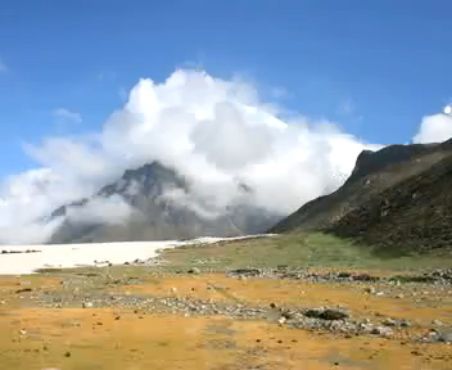The climate story of South Asia begins in the Himalayas, home to thousands of rain-fed glaciers that make up the largest body of ice outside the poles. In the winter, these glaciers capture the precipitation that makes it over the mountains. In the warmer months, they melt away water that feeds major rivers like the Ganga, the Indus, and the Brahmaputra. The system is a 'natural water tanker' for the 1.5 billion people living in the river basins below.The second important feature of the story is its extreme monsoon, in which half the rain for the season falls in only 15 days. During the summer, the monsoon sweeps up from the southwest and across the plain, crashes into the world's tallest mountains, and dumps its torrential burden onto the subcontinent.
This deluge eats away the young mountains' flesh, producing massive sediment loads that the rivers carry along their path through the world's largest delta and into the Bay of Bengal.Climate change will likely have a profound impact on these dynamics. Given the numbers of people who would be affected, and the narrow margins by which so many already survive, the consequences could be severe. It took several months travelling India, Pakistan Nepal, and Bangladesh to investigate what is at stake. Here is a photo feature on the various effects of climate change on South Asia followed by postcards from three places in the Indian subcontinent and, finally, notes on climate politics in India and the world in anticipation of the December's climate summit in Copenhagen.
View full article in The Caravan (pages 17-36).
